SEAT Arona FR Sport 1.5 TSI Evo
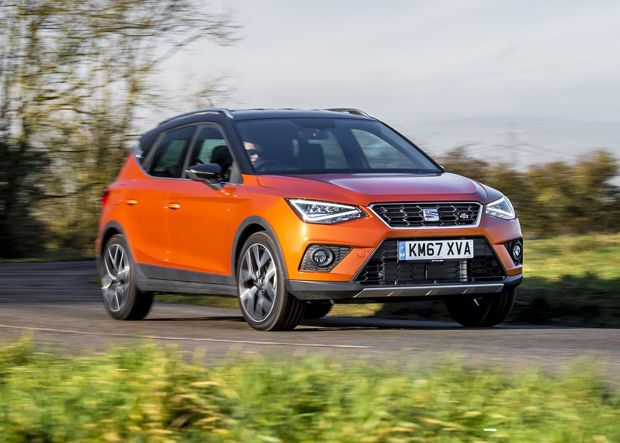

- SEAT Arona joins the fleet
- Windy city: Why is our Arona so noisy?
- Small SEAT scores big on boot space
- Hopping mad with the Arona
- SEAT Arona: An Ibiza in disguise?
- Start/stop problems with the Arona
- Trim talk: Is it worth spending extra for an Arona FR?
- Seat belt safety recall problems
- 1.0 TSI vs 1.5 TSI Evo - which is better in the Arona?
- That's infotainment - why SEAT's touchscreen is king
- Why so serious?
- Adiós Arona
SEAT Arona joins the fleet
Six months and several thousand miles await our new SUV with Dan behind the wheel. How will the Arona cope?
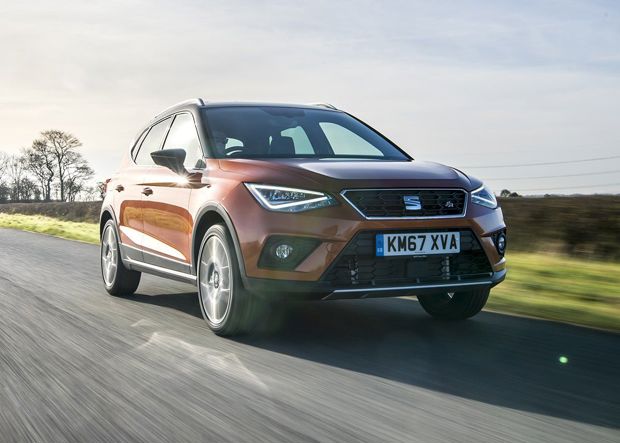
Date: 13 February 2018 | Current mileage: 489 | Claimed economy: 55.4mpg | Actual economy: 42.7mpg
Compact crossovers might sound like something you'll find tucked between the jam doughnuts and iced buns at your local Greggs, but they're actually the next big thing in the world of cars. Phase two in the SUV's grand plan for world dominance, if you will.
Given the unwavering popularity of SUVs and crossovers, it's perhaps unsurprising that carmakers are looking at new ways to encourage us to buy big, boxy cars. SUVs already make up one third of all new cars sold. And over the next five years that figure is expected to grow to almost 50 per cent. In short, every other car leaving a showroom in the UK will be some type of SUV.
The SEAT Arona is part of the new 'compact' breed of crossovers, which is expected to become our new favourite new car thing in the years to come. Why? Well that's simple: these jacked-up hatchbacks promise SUV-like comfort and practicality in a tin box that's roughly the same size as a Fiesta. Or in this case, an Ibiza.
Some might question the point of a kicked up Ibiza, but climb inside and the crossover argument becomes a compelling one with a better view of the road, more space and a huge boot. In fact, with 400 litres of storage, the Ibiza-based Arona provides the sort of practicality you’d expect from a much larger SUV, like the Ford Kuga.
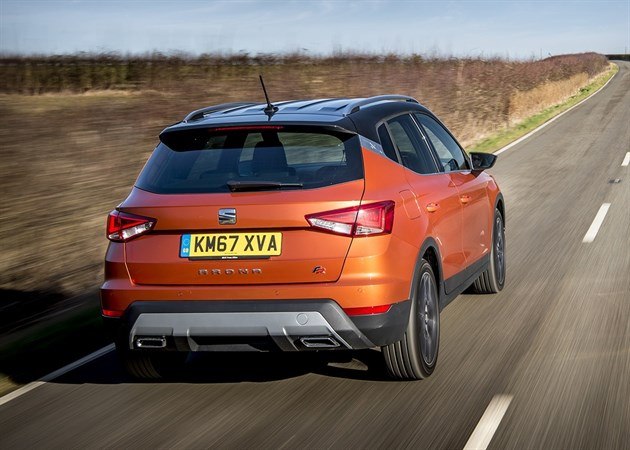
The SEAT Arona is based on the mechanical underpinnings of the Ibiza hatchback
Under the bonnet the Arona's engines are Ibiza-like too, with the 1.0 TSI offered alongside a 1.5 TSI Evo and 1.6 TDI, with advertised economy ranging from 55mpg - 70mpg. You also get lots of kit as standard, which means you don't have to raid the options list to get things like alloy wheels, DAB audio, LED daytime running lights and metallic paint.
My chariot for the next six months is the Arona FR Sport. Priced from £22,040, it’s at the upper, sportier end of the range and powered by the 150PS 1.5 TSI Evo petrol engine. To be honest, I wouldn't usually spec a car in FR trim, owing to the fact that comfort is usually compromised by the stiffened sports suspension and larger wheels. However, given that I wanted a car with the all-new turbocharged 1.5-litre petrol engine and the mechanicals to test it to its limits, it was the only option.
The Arona is a good looking car though. In fact, having already run the Ibiza for six months, I think it's much more stylish than the hatchback it's based on. The lines are sharper and the bi-tone roof - which is standard for all models - adds to the contemporary design of the exterior. It's only been a coupe of weeks, but I like it.
It's a pity the same cannot be said for the interior, because it's as grey as a January afternoon in Bodmin. Like the Ibiza, there's no colour. And it all feels distinctly at odds with the vibrant exterior. That said, it's comfortable and over the next six months I'll be putting this little crossover to task to see if the crossover future is a bright one.
Windy city: Why is our Arona so noisy?
Four weeks in and Dan has noticed that his long termer is a noisy long distance companion.

Date: 27 February 2018 | Current mileage: 1100 | Claimed economy: 55.4mpg | Actual economy: 44.7mpg
It always pays to have a good ear (preferably two) in this job. From tell-tale creaks of plastic trim, to faint but worrying rattles from the engine bay, my ears have always given me a good indication of a car's quality.
More often than not, a modern car will provide very little audible worries, but when it happens they often suggest something's amiss. And there’s certainly something wrong with the Arona’s aerodynamics, because there’s loads of wind noise. And not just at motorway speeds, with a 40-50mph jaunt creating an annoying blustering sound that reverberates around the ears of the driver.
At first I thought it was just a windy day. Then I assumed my elbow had caught a window switch and lowered one of the panes slightly. Perhaps it was a broken or loose seal in the door? However, after some investigation and varying weather conditions, I've come to the conclusion it is car. And nothing else.
The cause of the sound appears to be coming from the roof. And I can only assume it’s caused by the roof rails or the folding metal design of the tin top. Or perhaps both? Either way, it’s a royal pain in the posterior on a long trip.
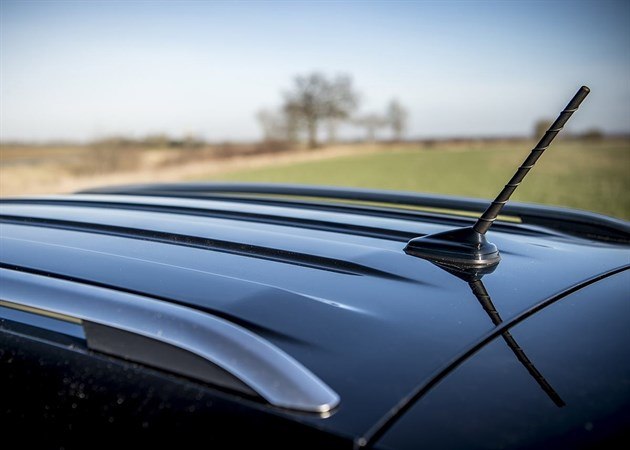
The Arona is not a quiet car to drive, with its roof and rails causing lots of wind noise,
Wind noise aside, the Arona has actually impressed me quite a lot these past few weeks. Despite being an FR Sport model, on stiffened sports suspension and 18-inch wheels, it rides the road extremely well. Road noise from the tyres is very low and body control in the corners - a traditional area of wobbliness for SUVs - is smooth and refined. In fact, bar the raised ride height, you'd be forgiven for thinking you're in a standard family hatchback.
The jury is still out on the 1.5 TSI Evo engine though. It's fine out of town, with lots of low-gear torque. This means you can stay in a high gear and cruise along without having to worry about the engine stuttering for revs. Likewise, the manual gearbox is smooth, which means you can quickly drop a gear without having to look down to negotiate the six-speed layout.
However, in town, the 1.5 TSI is somewhat more petulant and its 150PS feels ill-matched for the relatively short cogged first and second gears. As a result, it's easy to bunny hop down the road, with the high clutch setting making the Arona a bit of a pig to push away from the lights or negotiate slow moving traffic.
It could simple be that the engine is still going through the running-in process, but I suspect that the six-speed manual gearbox has been designed with the 1.0-litre TSI in mind. However, I'll reserve judgement on that until the Arona has a few thousand miles under its belt.
Small SEAT scores big on boot space
When it comes to storage, our Arona has the competition beaten when it comes to all-important bootspace.
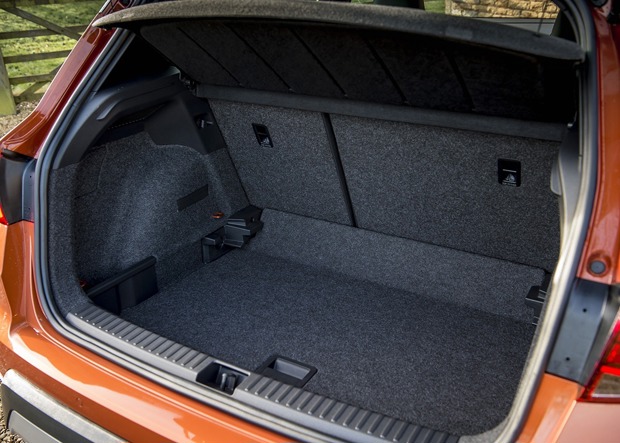
Date: 13 March 2018 | Current mileage: 1780 | Claimed economy: 55.4mpg | Actual economy: 44.9mpg
I have to say, the Arona is a useful little thing. Despite looking like an Ibiza that's eaten all of the pies, it packs a lot of practicality into its 4.1 metre long frame with space for four adults and a boot that's large enough to cope with the weekly shop and a couple of suitcases.
In fact, with 400 litres on offer, the Arona is far superior to the 300 odd litres you’ll find in the Fiat 500X, Ford EcoSport or Hyundai Kona. You also get more head and legroom in the back, which means you don’t have slide the front seats up to the dashboard to accommodate tall or stout adults in the rear seats.
There is one annoyance, with the door ends collecting lots of road grime. This means it’s easy for passengers to dirty their clothing as they get in and out of the rear seats, which is quite annoying in the winter months when it’s next to impossible to keep the car clean for anything more than five minutes. The boot lid is another dirt trap. And with no real interior boot handle, it always leaves hands annoyingly covered in a greyish layer of road salt and grime.
Chimney sweep hands aside, the Arona is generally an easy car to live with. The 1.5 TSI Evo petrol engine is superb on the motorway and on the road fuel sits just a smudge below 45mpg, which means the Arona is an affordable little petrol crossover to run on a daily basis.
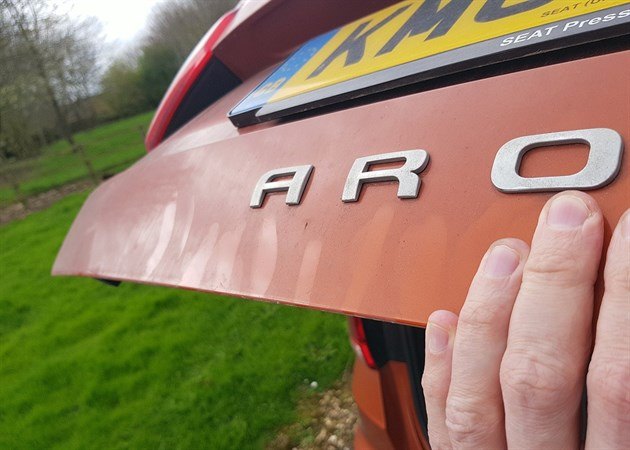
Annoyingly, the Arona doesn't have a interior boot handle and this means your hands get covered in grime everytime you close the hatch.
Admittedly, the Arona isn't the sharpest car to drive - even with Sport mode engaged the steering remains decidedly vague - but the handling is safe and predictable. And for most crossover buyers, this is exactly what they want.
The FR bodykit does give some people the impression that they're in for a hot hatch experience when they climb inside, which is quickly dispelled by the Arona's sluggish acceleration. According to SEAT, the 0-62mph sprint takes 8.3 seconds, but in reality is feels much, much longer.
You do get lots of handy storage spaces in the cabin though, with decent sized door pockets and a large cubby holes in the centre console. Being an FR model, the Arona also features a wireless charging pad for a smartphone. It is also covered in a thick layer of rubber to grip the phone and prevents it from taking flight when you make a tight turn on a small roundabout.
Even covered in greyish road grime, the Arona is a smart looking car. The copper metallic paint look great and the LED daytime running lights give it an Audi(ish) stance on the road. What's more, despite the 18-inch alloy wheels, the ride is exceptionally composed and only the deepest of potholes will transfer the odd bump to the cabin.
Hopping mad with the Arona
Dan is piling the mile on, but the Arona's low-speed manners are not improving.

Date: 27 March 2018 | Current mileage: 2411 | Claimed economy: 55.4mpg | Actual economy: 45.5mpg
It’s been something of a love/hate relationship with the Arona these past few months. Easy to drive on the motorway, smartly styled and practical, my compact crossover has proved itself as a great all-rounder. It's affordable to run too, with economy averaging in the mid-40s.
The Arona does have an annoying trait, however, with low-speed refinement leaving a lot to be desired. The issue starts as you pull away in first gear, with the high clutch and short-gearing resulting in a stuttering and bumpy get away.
It doesn't matter what driving style you try, the Arona always bunny hops down the road. Things are wobbly in second too, with the Arona lurching at low-revs before finally finding its feet at 25mph and settling down to what I'd call a comfortable ride quality.
At first I thought it was simply the clutch and engine running-in, but as I approach 2500 miles the Arona’s low-speed manners show few signs of improving. And it’s a real pity, because it’s a real peach to drive along on the motorway.

Dan's SEAT Arona in Cambridge, yesterday.
The cause of the hop, skip and jump experience is difficult to pinpoint, but if I had to make a guess I'd say it's caused by a combination of short-gearing and too much torque. It could well be that the gearbox's designed for the 95PS or 115PS 1.0 TSI petrol engines and not the 150PS 1.5 TSI - that would make sense given that the three-cylinder 1.0 TSI is the best-seller in the Arona range. However, if that is the case, perhaps SEAT should have made 1.5-litre version automatic only, because the six-speed gearbox is a poor match.
Low-speed problems aside, the Arona is excelling in almost every other area. Fuel costs are falling as the engine runs-in; the 1.5 TSI Evo engine is nudging towards 46mpg and I'm optimistic that it'll start pushing close to the 50mpg barrier as it gets more miles under its belt. Road and engine noise is also low, although wind roar remains an issue.
The Arona is supremely comfortable, however, with its FR sports seats providing excellent support for long trips. Indeed, last week, I took the car to Liverpool and was really surprised by how fresh I felt after the 200 mile run from Cambridge, with none of the usual aches or pains I usually get in my back from several hours behind the wheel.
The ride quality is another area that has impressed. Given the large wheels, stiffened and lowered suspension, I expected the Arona FR to be car that would provide a hard ride quality over rough surfaces, but it remains supple and comfortable.
SEAT Arona: An Ibiza in disguise?
Dan’s experiencing a sense of déjà vu with the Arona. Could it have anything to do with the fact he's driven Ibiza?
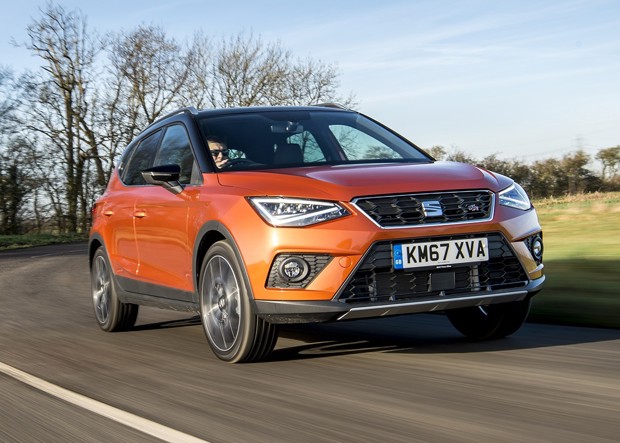
Date: 10 April 2018 | Current mileage: 3002 | Claimed economy: 55.4mpg | Actual economy: 46.4mpg
Do you ever get an overwhelming sense of familiarity, when something shouldn’t actually be all that familiar? I’ve been experiencing déjà vu ever since the Arona arrived at my door in Cambridge and I think a lot of it's related to my previous long termer, the SEAT Ibiza.
Given that the Arona is based on the Ibiza, it perhaps shouldn’t be all that surprising that is feels similar. After all, both share the same mechanical platform and engines. They also look quite samey too, in a Slim Fast before and after kind of way.
For the Arona, the comparison is mostly a positive one - I loved my time with the Ibiza and thought it was only marginally topped by its Volkswagen Group stablemate - the Polo - for being the best small hatchback on sale.
One area of criticism for the Ibiza was its poor ventilation system and this is a trait that the Arona suffers from too. Slow to heat up in the winter, the Arona's ventilation system will give you the cold shoulder for the first 10 minutes of any journey. It also suffers sporadic moments in the summer, with too much or too little cold air. Like the Ibiza, the system has a mind of its own.
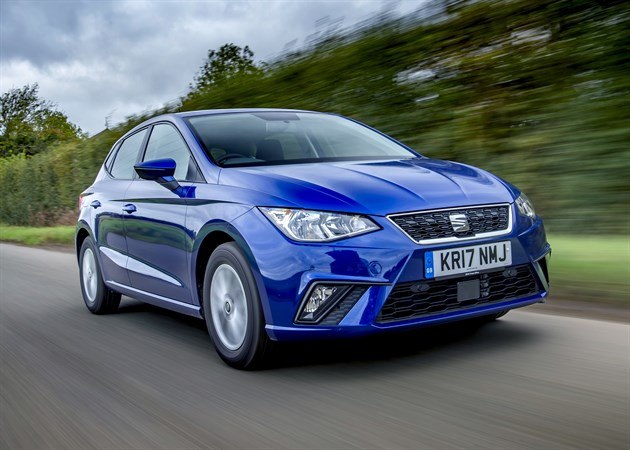
The Arona is - to put it crudely - a jacked up version of the Ibiza hatch
There are lots of good things too. As with the Ibiza, you get loads of space for adults to sit in comfort. The boot is huge too, while all-round comfort is fantastic and even the addition of large wheels and sports suspension does little to disrupt the smooth and cushioned ride quality.
When it comes to on-the-road handling, the Arona strikes that odd balance of feeling small in town and large on the motorway. And by that I mean it's light and nimble at low speeds, but reassuringly solid at 70mph. Even harsh crosswinds will not bully the Arona around, and its 1.5-litre TSI Evo engine is whispery quiet.
Given the similarities, it could be argued that there's no point in the Arona. After all, who wants a jacked up small car that costs £2000+ more to buy? Well, quite a lot of people it turns out. The compact crossover market is the fastest growing new car segment in Europe and it's on course to overtake the humble hatchback as the UK's favourite small car.
Despite the similarities, the Arona make a strong case for itself. It’s more practical, more comfortable and better equipped as standard than the Ibiza. It also looks much better in my eye and doesn’t cost that much more to run when you compare it like-for-like with the Ibiza. Dare I say it? I think I'm becoming a compact crossover convert...
Start/stop problems with the Arona
Overactive start/stop system leaves Dan struggling as power steering and engine cuts out.

Date: 24 April 2018 | Current mileage: 3500 | Claimed economy: 55.4mpg | Actual economy: 46.7mpg
If you've driven a modern car then it’s highly likely that you will have experienced some form of engine stop/start. Designed to improve fuel economy and reduce tailpipe emissions, the system cuts the engine when the vehicle is stationary. Then, as the name implies, it starts up again when you press the clutch or release the brake to get underway again. It's a great idea; however, in the Arona, it's one that doesn't always work as it should.
Problems start as you crawl along in traffic, with the engine occasionally cutting out when the car is still in motion. Admittedly, it's only for a second or two at 3mph or 4mph, but it's incredibly unnerving to feel the power steering switch off and the wheel becoming a deadweight in your hands with the car lurching onwards.
This has been picked up by other Arona drivers in our Owners’ Reviews section, with some criticising the car for cutting out at roundabouts and this is something I’ve experienced a handful of times. Admittedly you can switch the stop/start system off, but that somewhat defeats the point.
Like the hopperty first gear and noisy roof, the crude stop/start system isn’t a deal breaker when it comes to appreciating the outright quality of the Arona – it’s still a very good car – but it does take the shine off what is otherwise the best compact crossover on sale right now.
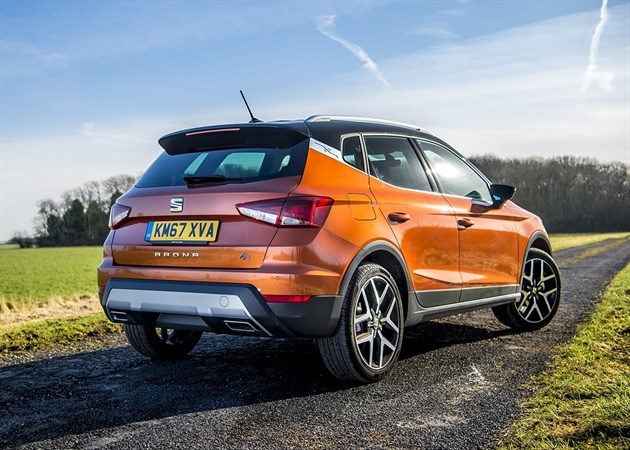
The SEAT Arona is one of the best compact crossovers, but it does have a few annoying traits.
Being a completely brand new model I guess teething issues were inevitable and it would be safe to assume that SEAT will iron out most of these shortfalls in the coming months with software updates and technical patches. But it's a pity they weren't picked up during the production stage.
That said, as a practical and efficient compact family car the Arona is still head and shoulders above the competition. It’s easy to use, comfortable and cheap to run. Fuel economy continues to improve, as the engine runs-in, with the 1.5 TSI Evo engine now averaging 47mpg. The supple ride quality also makes the Arona a great long distance cruiser.
The four-cylinder engine has lots of mid-range acceleration and this means you can comfortably overtake slow moving traffic without having to make multiple downshifts. Indeed, simply drop from sixth to fifth and you'll find plenty of turbocharged poke for passing a HGV.
Having put 3500 miles on the clock, I’ve also grown to appreciate the navigation system. For the most part, it automatically avoids jams and prevents you from running into lengthy delays. However, occasionally, it'll forget to clear its memory and reroute you around the houses when the actual delay has long since passed.
Trim talk: Is it worth spending extra for an Arona FR?
Dan's SEAT Arona FR Sport is turning heads but causing confusion with its lack of performance.

Date: 8 May 2018 | Current mileage: 4105 | Claimed economy: 55.4mpg | Actual economy: 46.7mpg
As a car journalist, my work schedule is usually packed with airports, test drives and long stints at my desk reporting on news that may (or may not, you decide) capture the attention of Britain's drivers. However, come weekends, I get to spend my time with non-car people. And when I do, they always ask one thing: “What you driving these days?”
When I reply with “SEAT Arona FR Sport”, some of them get excited. And why not? With a name as evocative as 'FR Sport' the SEAT sounds fast, exciting and capable of covering 0-62mph in four seconds. Obviously, they’re wrong on all accounts.
That’s not to take anything away from my long termer; it’s a crossover and hardly the car’s fault for its daft, sporty name. And that brings me to the another question my friends usually ask: “Why is a slow crossover called FR Sport?”
That's a very good question. And one which I'm at fault. The FR Sport is a trim level in the Arona range. You get six trims to choose from, with SE being the cheapest and the oddly spelt Xcellence being the most luxurious and expensive. Just below the Xcellence, is FR Sport. And being from Essex, I opted for this because it comes with a bodykit, lairy alloy wheels and Alcantara seat upholstery. It's also one of the few models offered with the 1.5 TSI Evo petrol engine.
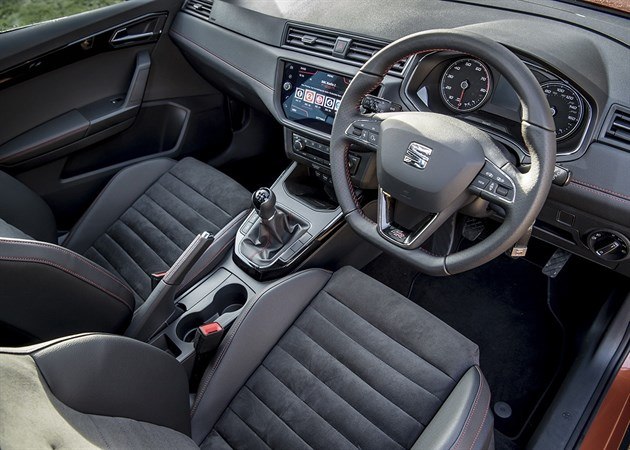
FR Sport models get a classy interior, with part leather and Alcantara covered seats
As with all nice things, the FR Sport trim costs extra. About £770 extra over the standard FR. However, despite the additional money, I think it's worth it. The Arona looks better on the 18-inch alloy wheels and the ride is identical to that on the 17s. It also turns heads, especially in its two-tone Eclipse Orange paintwork.
Another feature of FR Sport is dynamic chassis control, which automatically tinkers with the dampers and steering to provide the best handling and control. To be blunt, this feature is wasted on the Arona. It’s not a fast car and its top heavy nature makes it ill-suited to high speed cornering. That’s not to say it’s dangerous to drive at speed, it just doesn’t ever feel comfortable when it comes to carrying high speed around a tight bend.
If the idea of splashing out on big wheels, body kits and posh seats is not to your liking, you could forgo the whole thing and stick with the bog-spec SE trim. I say bog-spec, but it's actually well equipped. You don't get the option of the 1.5-litre turbocharged engine, but you do get all of the essentials as standard, with alloy wheels, LED daytime lights, touchscreen infotainment, double boot floor and cruise control all thrown in.
Given the lumpy nature of the 1.5 engine at low speeds, I'm starting to come round to the fact that the Arona is a car that's at its best with a three-cylinder 1.0-litre petrol engine. The 1.5 just doesn't feel at ease with the manual gearbox and I'm not sure the performance boost is worth it either. However, when it comes to trim, the FR Sport (just about) justifies the money and confusion.
Seat belt safety recall problems
Safety recall effectively makes the SEAT Arona a four-seater, with a seat belt problem rendering the middle pew useless.
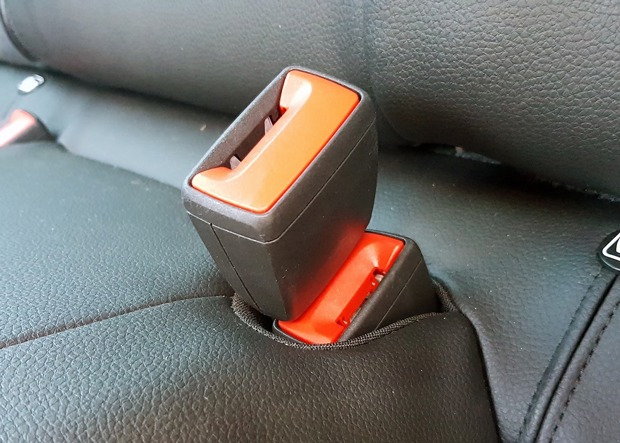
Date: 22 May 2018 | Current mileage: 4685 | Claimed economy: 55.4mpg | Actual economy: 46.8mpg
Over the course of a telephone call my SEAT Arona went from being a five-seater to a four-seater. Why? Well, that's down to the fact that SEAT discovered a serious safety flaw, which may result in the middle belt uncoupling itself.
The flaw was uncovered by Finnish motoring magazine Tekniikan Maailm, who discovered the problem when testing the Arona on track with three passengers in the back. Problems started when the seatbelt housing for the middle seat pushed against the release button for the seat next to it. As you can imagine (and see in the picture below) this has potentially disastrous consequences for a compact family car.
Obviously, not speaking Finnish, or being a reader of the country’s automotive magazines, I knew nothing of this. Nothing until I received a sheepish phone call from the SEAT press office that told me “no one should use the middle seat under any circumstances”.
The problem I have now is the lack of information in regards to the fix. Like every Arona owner in the UK, SEAT has not provided any date for the recall. And that means I am no longer able to carry four passengers, which is a pain because I regularly use my car to transport friends and family at the weekends. Thankfully it doesn't impact the Isofix points, which means you can still use two child seats in the back.
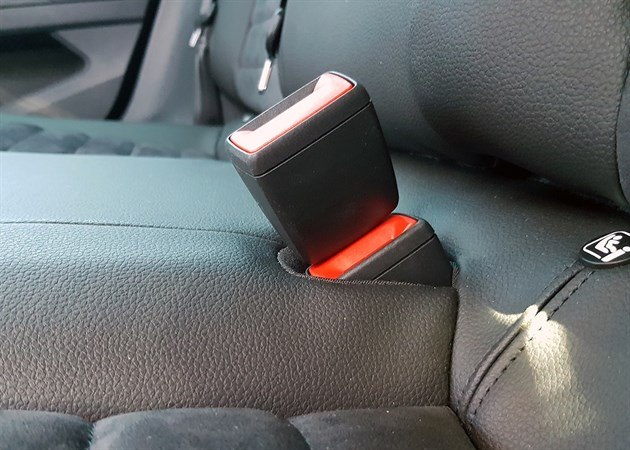
The SEAT Arona has a serious safety flaw, with the seat belt housing unintentionally unclipping the belt next to it.
Belt bother aside the Arona is still a favourite in the Powell household, with its large boot, comfortable ride and well-equipped interior making it a great all-rounder. Its compact size is also perfect for parking in and around my hometown of Cambridge, with a few turns of the wheel all that's required to guide the Arona into a parallel space.
There have been a couple of slight issues, with the engine start/stop being one of the most puzzling. Indeed, it has developed the habit of showing the occasional error message that says the start/stop has malfunctioned. However, after a quick restart of the car, it clears without problem. I don't know if the message is simply telling me that the battery is not charged up enough to operate start/stop or if there's a more serious problem lurking.
The Arona has also developed a couple of knocking noises, with the odd bits of trim coming loose here and there. Most of it is small and easily fixed under warranty - like the seat stitching next to the lower seat frame coming apart - but it's enough to raise a couple of alarm bells when it comes to longevity.
However, for now, the seat belt fault is the biggest annoyance. Most owners should get a call or letter from their local dealer, but like me they won't get any dates or solutions. Instead they'll simple be told: "Do no use the middle seat in the back, it might not be safe." Not very reassuring, I'm sure you'll agree.
1.0 TSI vs 1.5 TSI Evo - which is better in the Arona?
Which petrol engine should you choose in your shiny new SEAT Arona? Dan mulls over the options.
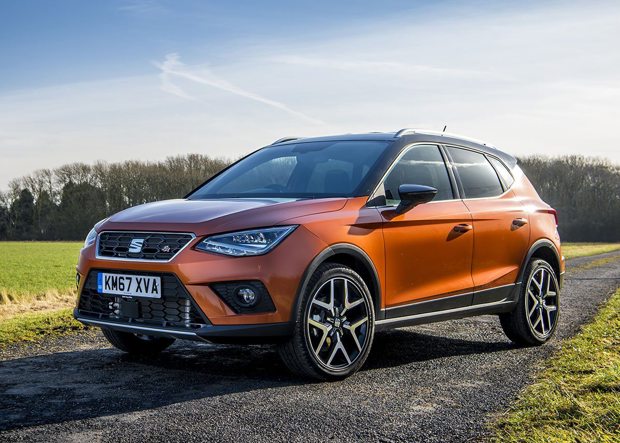
Date: 5 June 2018 | Current mileage: 5100 | Claimed economy: 55.4mpg | Actual economy: 46.9mpg
So you want a new car. You've gone through all of the manufacturer websites and glossy brochures, sipped awful dealership coffee and narrowed your choice down to one shiny new model of car, but which engine should you choose? Well, when it comes to the Arona, the answer is the three-cylinder 1.0 TSI 115PS petrol.
When I was in the process of choosing my Arona I thought the 1.5 TSI Evo 150PS petrol engine would be the best choice. After all, I'd sampled it in the Golf and was really impressed. It was smooth, efficient and miles better than the old 1.4 petrol engine. Surely I would get same warm, fuzzy feeling of happiness in the Arona? How wrong I was.
As mentioned in a previous update, the 1.5 TSI Evo engine feels at odds with the gearing of the Arona at low speeds, which can make it something of a pain to drive around town with the six-speed manual gearbox feeling like it is always in a state of flux with the engine in first and second gear. The high biting point of the clutch doesn't help matters either.
Climb up to 25mph and the tug-of-war between the gearing and engine melts away, but it can be quite frustrating to get to this point if you're in start/stop traffic with the Arona kangarooing around town.
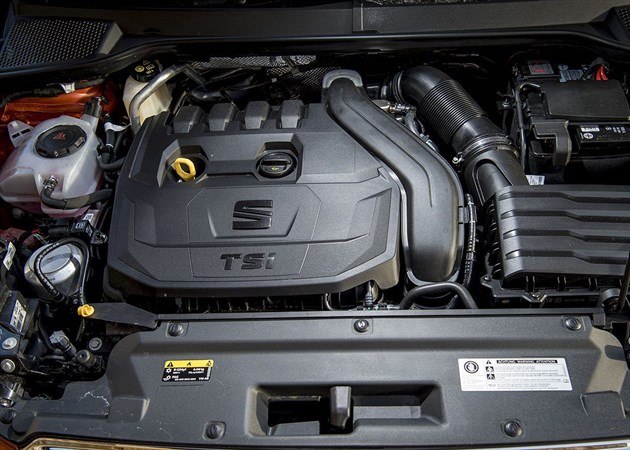
The 1.5 TSI Evo is a great petrol engine, but it doesn't shine particularly bright in the Arona
Having driven the Arona with the 1.0 TSI 115PS petrol, I can hold testament to how much better the SEAT is with the three-cylinder engine. Admittedly, it lacks the high end poke you get with the 1.5 when it comes to overtaking and motorway runs, but if you use your car in town quite a lot I think it's a price worth paying.
Running costs for the three-cylinder unit should also be lower, with the 1.0 TSI's advertised economy in the mid-50s when it comes to all important mpg. Insurance costs should also be cheaper with the 1.0 TSI FR Sport being ranked in band 12E, compared to the 18E of the 1.5 TSI Evo.
There's still no word on the seat belt recall, which means no one can sit in the middle rear seat, but fuel economy has evened out at a smudge short of 47mpg. Admittedly, that's a little disappointing for a car that's advertised with an average of 55.4mpg, but it doesn't change the fact that the Arona is an affordable car to use every day.
I've only got a few weeks left with the Arona, but still have plenty of mileage to rack up with trips to Manchester and Liverpool planned. Thankfully this is where the 1.5-litre engine comes into its own, with smooth acceleration and low noise. That is, of course, until I hit traffic or town...
That's infotainment - why SEAT's touchscreen is king
When it comes to touchscreen infotainment, the Volkswagen Group pushes the competition away with a simple hand swipe, according to Dan.
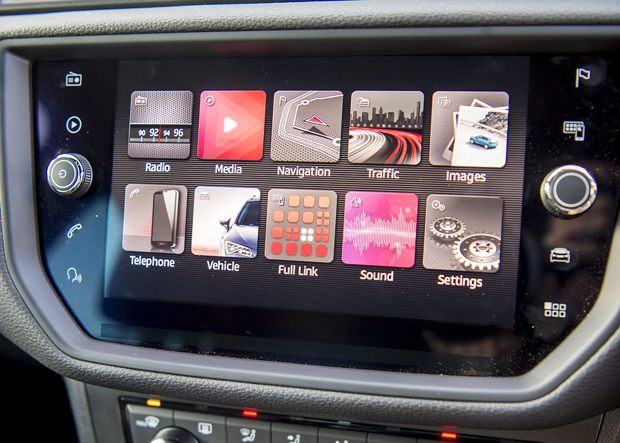
Date: 19 June 2018 | Current mileage: 5710 | Claimed economy: 55.4mpg | Actual economy: 48.0mpg
Volkswagen has received a lot of stick in recent years. From a global emissions scandal to reportedly gassing monkeys to prove the safety of its new diesel engines, Volkswagen Group has had something of a tough old time.
However, say what you will about VW Group, they do get some things right. And touchscreen infotainment systems are one of them. Indeed, during my years of testing cars, I don't think any manufacturer comes close to matching the touchscreen stuff you get in a Volkswagen Group car. Unlike its German rivals, there are no dials to twirl or buttons to press to get stuff done. Instead just jab a finger at the screen and generally it does your bidding.
This is certainly the case in the SEAT Arona; over the past two weeks I've clocked up more than 500 miles and found the touchscreen system painless to use, with quick screen changes, easy to read graphics and an instant hook up to my phone.
A smart eight-inch touchscreen system is installed in almost every Arona as standard, with DAB audio, navigation and full connectivity for MirrorLink, Apple CarPlay and Android Auto. You also get a handy wireless charging dock for your phone, which means you don't have to mess about with wires to give the battery a boost when on the road.
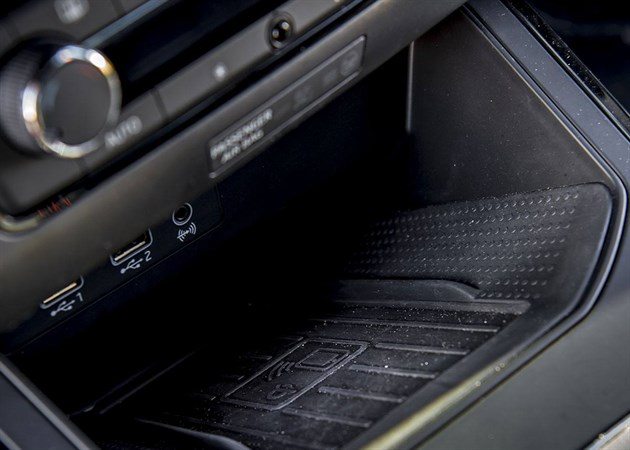
The Arona's wireless charging pad makes it easy to boost a smartphone when on the road
The navigation system is simple to master and provides timely instructions, which means you get plenty of notice when it comes to turning off a motorway or junction. In years gone by, Volkswagen sat navs had a habit of giving you about five seconds notice, which would usually result in you missing your turn and driving for miles until the next exit.
The only real criticism of the Volkswagen navigation is found in its rerouting to roads. This occurs when the system takes you on roads that don't have any motion cameras. This is actually a problem for almost every sat nav on sale right now, with all assuming that a road without a motion detector is a road that hasn't got a delay. More often than not this is not the case.
Indeed, during a drive to Manchester, the navigation took me off the M6 to avoid a three mile tailback after a minor shunt. Unfortunately the detour involved a B road that was jammed solid because a lorry had got stuck under a bridge. As a result I spent 45 minutes in a gridlock that was probably far worse than that on the M6.
A fortnight of lengthy motorway runs has also seen average economy climb to 48mpg, which is still some way short of SEAT's advertised figures. However, while the 1.5 TSI Evo engine is a bit rubbish in town, it is wonderfully smooth above 40mph. It's just a pity the quiet engine is spoiled a little by the abundance of wind noise over the top of the car.
Why so serious?
The cabin of the SEAT Arona feels somewhat flat when compared to the colourful interior of the Volkswagen T-Roc.

Date: 3 July 2018 | Current mileage: 6447 | Claimed economy: 55.4mpg | Actual economy: 47.5mpg
It might look vibrant and colourful on the outside, but climb into the cabin of the SEAT Arona and you'll find it's as serious and grey as a funeral beyond the wall in Game of Thrones. It's a pity, because this is a sharp looking car. But I can almost imagine the scenario where the hip and well-heeled designer was prevented from entering the car, with SEAT executives insisting that drivers want the same old dull plastics and seat coverings.
Choose a Volkswagen, however, and you'll get a very different looking interior. Gone is the PG-rated Fifty Shades of Grey, and in its place is the real deal. I'm talking colour, shiny door inserts and bright dash frames that stop you from thinking that your car was designed by the man who did the Mk1 Mondeo in the early 1990s.
By chance, HonestJohn.co.uk had a new Volkswagen T-Roc delivered to the office. And it surprised (and saddened) me to see how much better the cabin is. The coloured inserts add a welcome bit of flair that, for reasons unknown, are banned from SEAT's product range.
You also get more toys, should you wish to pay for them, with the standout addition being the digital instrument binnacle that allows you to customise the display, with maps and navigation directions. In comparison the Arona feels like a poor relative, despite the layout of the cabin and dash being effectively the same.
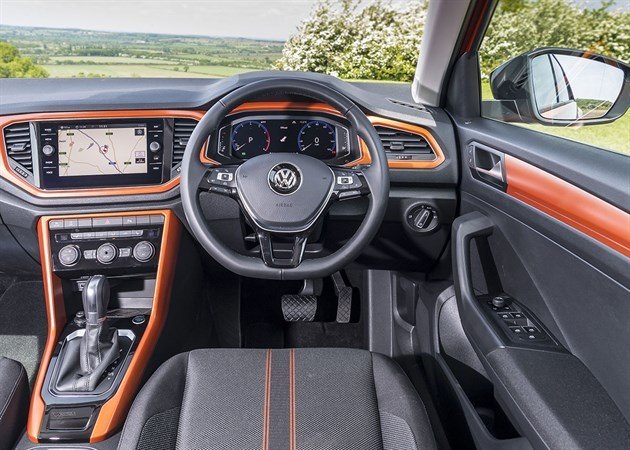
The Volkswagen T-Roc gets a fun and colourful cabin, while the Arona has to make do with a sea of grey.
Obviously, being more expensive, Volkswagen wants the T-Roc to be a bit more upmarket and exclusive. And that's fair enough when it comes to the the best tech - like the digital dash - but would it really be a deal breaker to give the Arona some colour in the cabin?
Given the similarities between the Arona and T-Roc, I'm not convinced the Volkswagen justifies its premium price tag over the SEAT. Yes, it's a little more refined and quieter on the motorway, but the 1.5 TSI Evo engine suffers from the same low-speed kangarooing as the Arona and this means it bunny hops down the road in the same manner as the Arona when specified with a manual gearbox.
However, unlike the SEAT, Volkswagen offers a DSG auto with the 1.5-litre engine. This may be the solution to the four-cylinder engine's woes, but you'll have to spend almost £26,000 to find out if that's the case. Ouch.
With just a couple of weeks left of my Arona loan, the time has come for me to reflect and wave goodbye to my bright and colourful crossover. It's mostly been a positive experience, but there are some annoying niggles. More on that in two weeks in my final update.
Adiós Arona
After six months and almost 7000 miles, the time has come for Dan to sum up his Arona experience and wave goodbye to the SEAT.
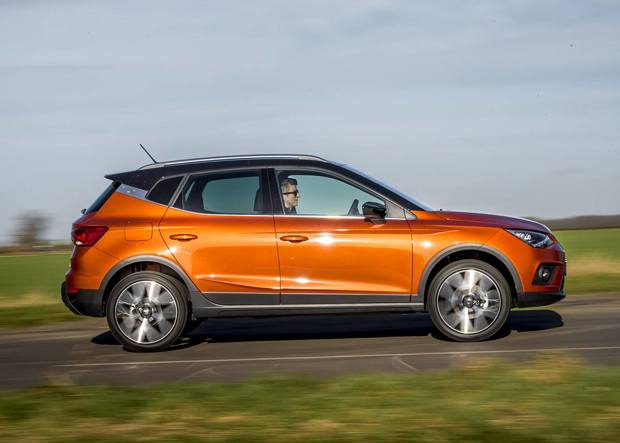
Date: 17 July 2018 | Current mileage: 6987 | Claimed economy: 55.4mpg | Actual economy: 47.6mpg
The time has come for me to say goodbye to the SEAT Arona. And it's a fond farewell, with the Arona proving to be a great and likeable little crossover. It only has one issue - the 1.5 TSI Evo engine. I don't like. And neither does the Arona.
If you're thinking of buying one of these then I cannot overstress how much I like this car. It's stylish, comfortable and spacious enough to be a compact family run-around. Indeed, over the past six months I've used the Arona to travel all over the UK and it's never really missed a beat on the open road.
The only problem is the 1.5-litre engine, which is ill suited to the six-speed manual gearbox. Unlike the Volkswagen T-Roc, there is no automatic option, which means you either have to learn to love the daily hop, skip and jump drive, or opt the 1.0-litre engine. In my opinion, the Arona is one of the best small crossovers when fitted with the 1.0 TSI 115PS petrol.
There are some niggling refinement issues: the roof generates a fair bit of wind noise, which gives the impression of driving through a howling gale when it's actually a fine summer's evening. There is also the issue of the seat belt in the rear, which still hasn't been fixed. But that probably has something to do with the fact that my car was due to be returned to SEAT. In fact, as I write this, there is probably some guy in a workshop fixing the belt.
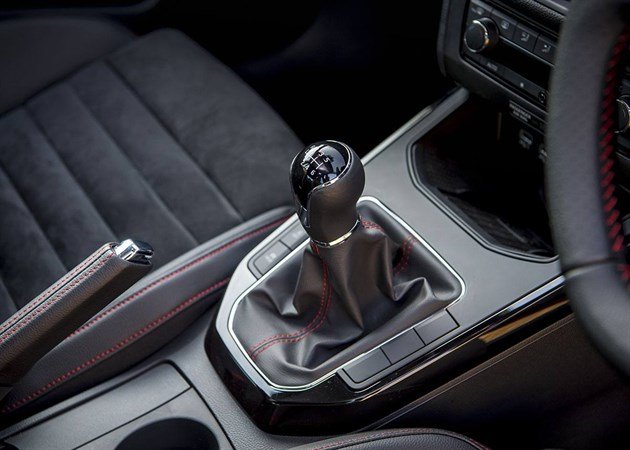
The odd couple: The six-speed 'box and 1.5 TSI Evo engine struggle to find harmony in town.
Yet, despite the problems I've experienced, I can easily recommend the SEAT Arona FR Sport. It's a nice car to look at, comfortable and has plenty of space for four adults to fit without those in the front having to slide their seats forward. The Arona also has one of the largest boots in its class, which makes it great for long weekends away.
It might not be the sharpest car to drive - show me a crossover that is - but the Arona boasts a well-judged ride that doesn't suffer with the addition of sport suspension or 17-inch wheels. Over the past six months the roads in Cambridge suffered badly at the hands of a freezing winter and boiling hot summer, but the Arona transfers very few rattles or knocks into the cabin.
Some interior trim has come loose during wear and tear, with the passenger seat stitching looking a little loose at the base. However, for the most part, the SEAT feels like it has been built with some sense of durability, although there are no hooks or handles for handling jackets in the back.
So, would I buy a SEAT Arona? As you’ve probably already guessed, the answer is yes. But not with the 1.5 TSI Evo engine. It just doesn't do the Arona justice. And with the right engine, this is a cracking little car.
